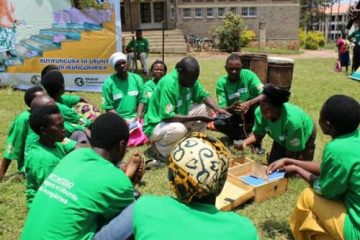In the lush cacao lands of Cameroon, Indigenous Baka communities are showing Africa and the world that sustainable farming can protect both livelihoods and wildlife.
For generations, Indigenous farmers have lived in harmony with the forest, depending on it for food, medicine, and income. “We live with the forest and the forest lives with us. When we take care of the forest, it provides for us and helps our cocoa farms thrive,” explains 26-year-old cocoa farmer René Etoua Meto’o.
The recent surge in global cocoa prices from $3 to nearly $8 per kilogram between 2023 and 2024 should be a blessing. Cocoa makes up about 12 percent of Cameroon’s exports, but higher prices risk fueling deforestation as farmers expand into fragile rainforest ecosystems. That would not only threaten biodiversity, but also endanger the very communities that depend on the forest.
Instead, Cameroon has taken a different path. Through the Congo Basin Landscapes Initiative, Indigenous farmers are trained and equipped to produce premium cocoa without cutting down a single tree. Supported by UNEP and the Global Environment Facility, this initiative is helping farmers increase yields while preserving one of the planet’s most important carbon sinks.
This model holds powerful lessons for Africa. Across West and Central Africa, from Ghana to Côte d’Ivoire, Nigeria to the DRC, cocoa and other cash crops drive millions of livelihoods. However, without sustainable practices, the continent risks trading short-term profit for long-term ecological destruction.
“Indigenous people are guardians of these forests. They are the first line of defense in protecting ecosystems of the Congo Basin,” says UNEP’s Tessa Claude Ndala Mayouya. In addition, as Rainforest Alliance-certified chocolate from Cameroon reaches global markets, the message is clear: African farmers can compete internationally while safeguarding their environment.
As Nadège Nzoyem of the Rainforest Alliance puts it: “When you buy a chocolate bar with the green frog, you are not just buying chocolate. You are investing in biodiversity, in forests, and in the people who protect them.”
Cameroon’s example shows that Africa does not have to choose between prosperity and preservation. By embracing Indigenous knowledge, sustainable farming, and fair trade, the continent can turn its natural wealth into a future where both people and the planet thrive.








